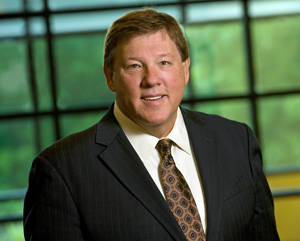
During the late 19th Century, the electric power system emerged from a “Big Bang” of technological innovation. In those early years, rapid progress in alternating current transformers, generators, and other electrical equipment resulted from the many scientists, inventors, and researchers exploring the new science of electricity and magnetism.
Today’s society has witnessed a similar Big Bang in computer and communication technology. This combines with intensive research in climate and other sciences to create expectations for big breakthroughs in electricity production, delivery, and use.
EPRI Journal interviewed Lynn Orr, Under Secretary for Science and Energy at the U.S. Department of Energy, to discuss a potential reinvention of the power system. In that interview, Orr said this: “There is a huge opportunity to invent the energy technologies and systems of the future, and our job now is to build and execute a portfolio of research that makes that possible. We need both the applied side and fundamental research. This is a time where we can put science and energy research to work in the interests of the nation.”
Note his emphasis on both applied and fundamental research, spanning energy and other sciences. These are important to consider as we ponder a potential Big Bang in the electricity sector. I encourage you to read the articles and Secretary Orr’s interview in this edition of EPRI Journal and to notice the breadth and diversity of research that’s reported. We and many others are, in fact, reinventing the power system. Are we moving toward another Big Bang or towards decades of steady, incremental progress? Consider that question as you read these and other articles:
Global demand for high-voltage direct current (HVDC) transmission is growing, and power companies are seeking EPRI guidance as they consider building new transmission lines or attempt to derive more value from existing lines. Utilities that need to integrate significant renewable resources can use this guidance to identify scenarios in which HVDC can be a cost-effective solution. EPRI research shows that converting AC lines to DC operation can increase capacity as much as constructing one or more AC lines, and we are discussing with several utilities field demonstrations of AC-to-DC line conversion.
The question of coal is often framed in terms of phasing it out: how long this will take and what will replace it in the generation portfolio. As researchers, we take a more open-ended approach. An EPRI white paper discusses whether technology is available or under development that would enable coal plants to meet emissions standards without carbon capture and storage, and the answer is a qualified “yes.” By combining both fundamental and applied research, in both energy and other sciences, we may yet see a sequence of breakthroughs that keep coal in the mix for decades to come.
EPRI is working to advance distributed energy resources management systems (DERMS), which are new types of software and communication systems to manage millions of distributed energy resources. DERMS must be able to aggregate distributed resources in a manageable number, handle their settings and identify grid-related services, drive toward minimal cost and maximum power quality, and use diverse technological languages cohesively.
For the energy sector and its stakeholders, energy efficiency has a solid role in the future power system. What becomes important, therefore, is a good understanding of how we get there. EPRI’s Technology Readiness Guide for energy efficiency categorizes and scores various existing and emerging technologies by comparing their performance. Utilities can use this to assess their potential for broad deployment. We scout early-stage technologies, assess laboratory testing, conduct and evaluate field tests, validate tests through early deployment, and support full rollouts.
If you’re thinking this doesn’t sound “Big Bangish,” you’re right. This is not unusual in technological progress. What arrives in the marketplace with a big splash may seem to consumers like a Big Bang, but to researchers the view spans years or decades of incremental research and development.
One area where society expects steady progress is environmental protection. Today some of our most forward-looking research is in battery technology—an interesting trend considering that batteries were used by the earliest electricity researchers. If batteries have a large-scale role in energy storage, we want to get ahead of recycling challenges. We’re looking at the progress made in automotive lead-acid batteries—96% of which are recycled. There’s a broader challenge as the power system deploys and retires diverse batteries with a spectrum of potential environmental issues. Our goal is to address these before they become a problem.
So does the picture emerging from all this work point to a Big Bang, a singular transformative technology or application? I expect to see more changes in the electric power system during the next eight years than we have seen in the past 25. What we should look for—and continue to deliver through the future power system—is a big “bang for the buck” for consumers and society to ensure continued availability of safe, affordable, reliable, environmentally responsible electricity.
Mike Howard

President and Chief Executive Officer, EPRI


